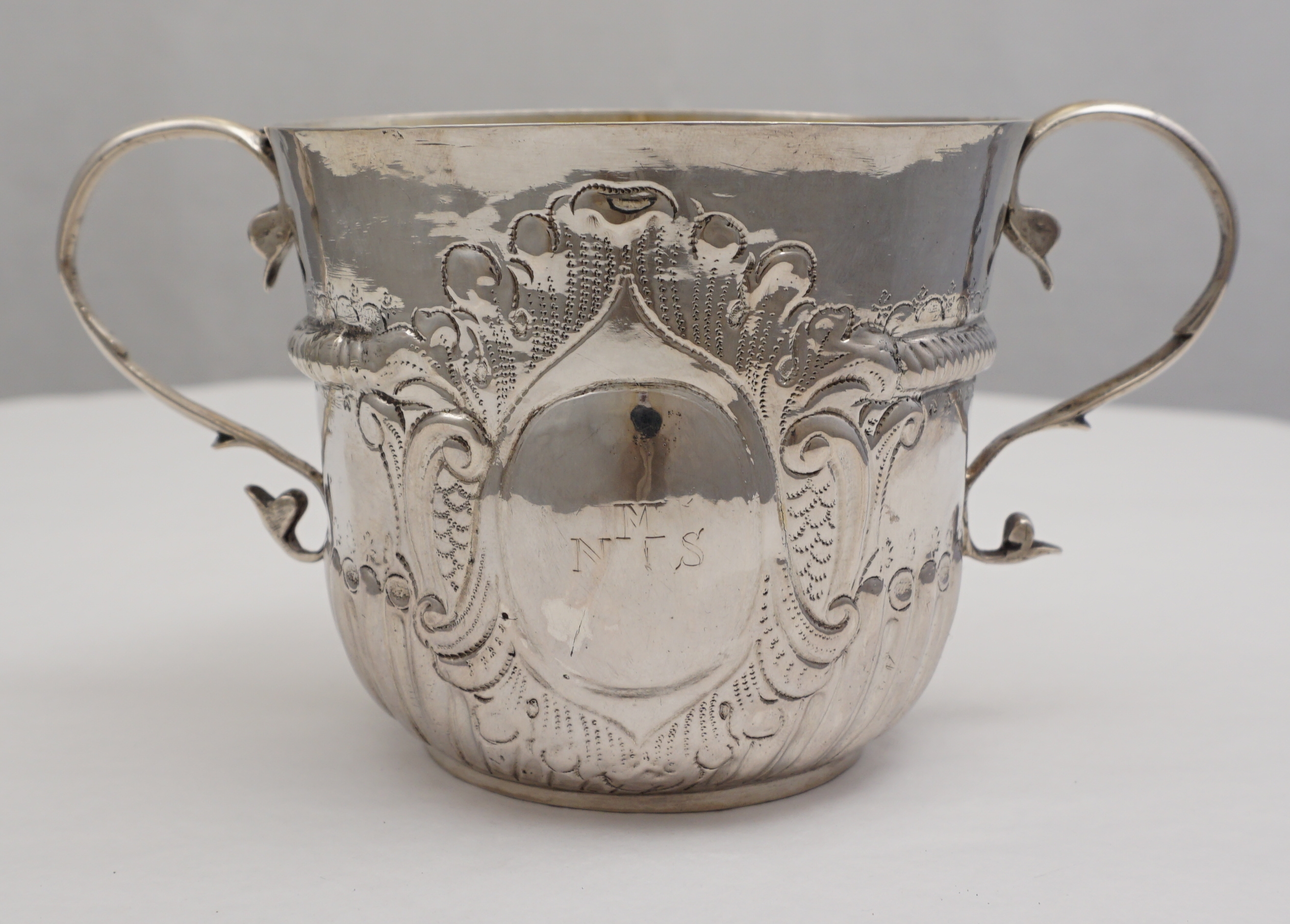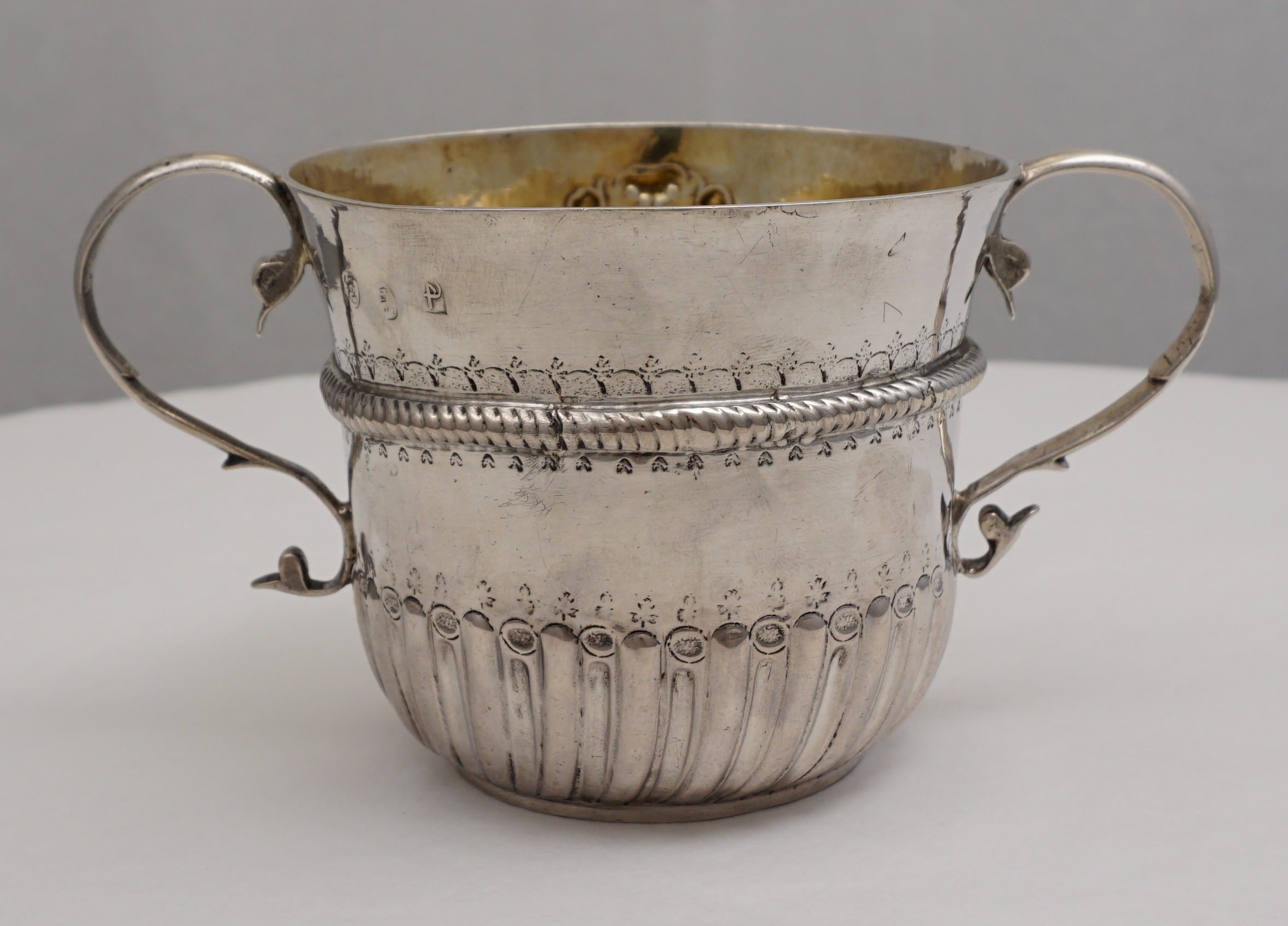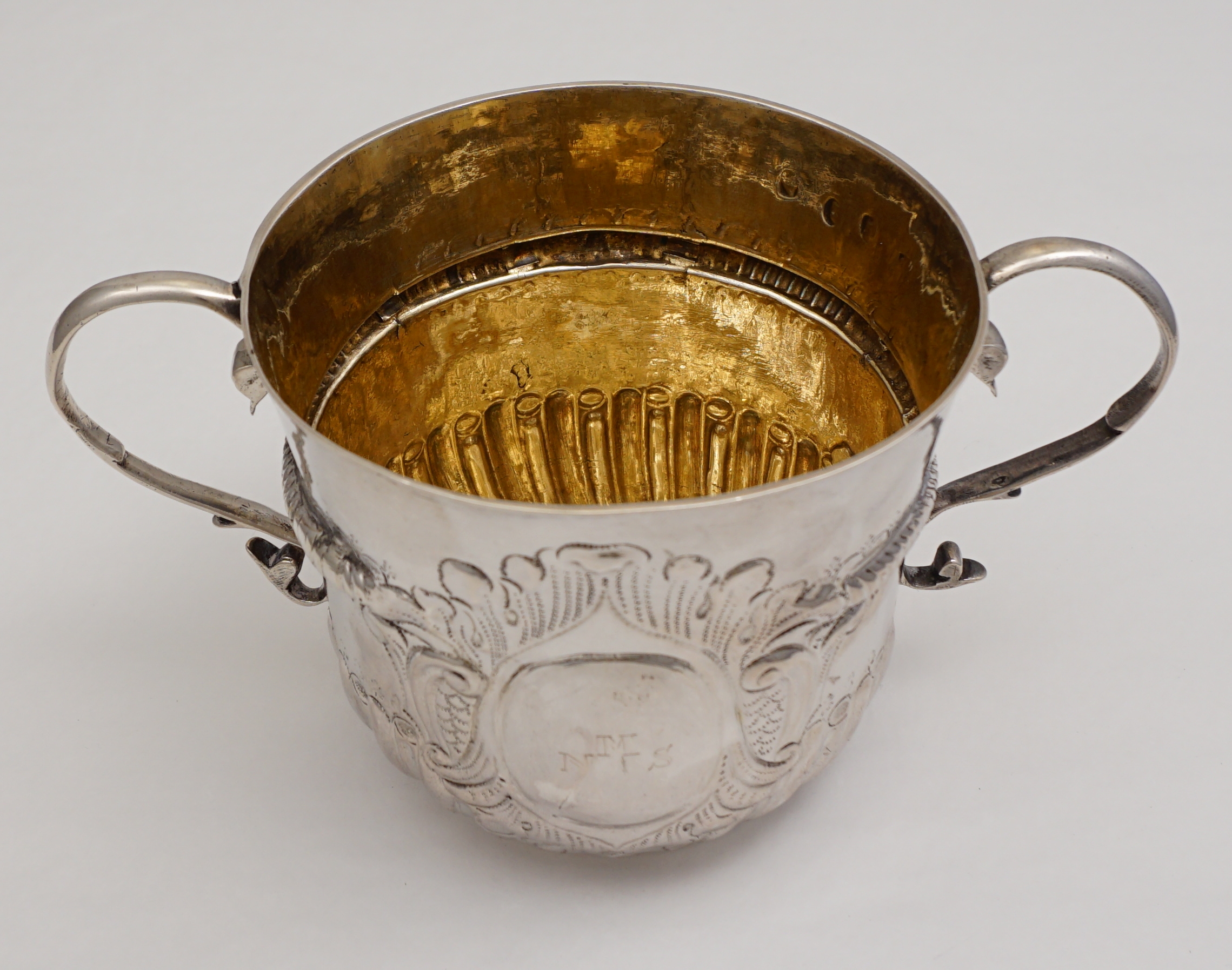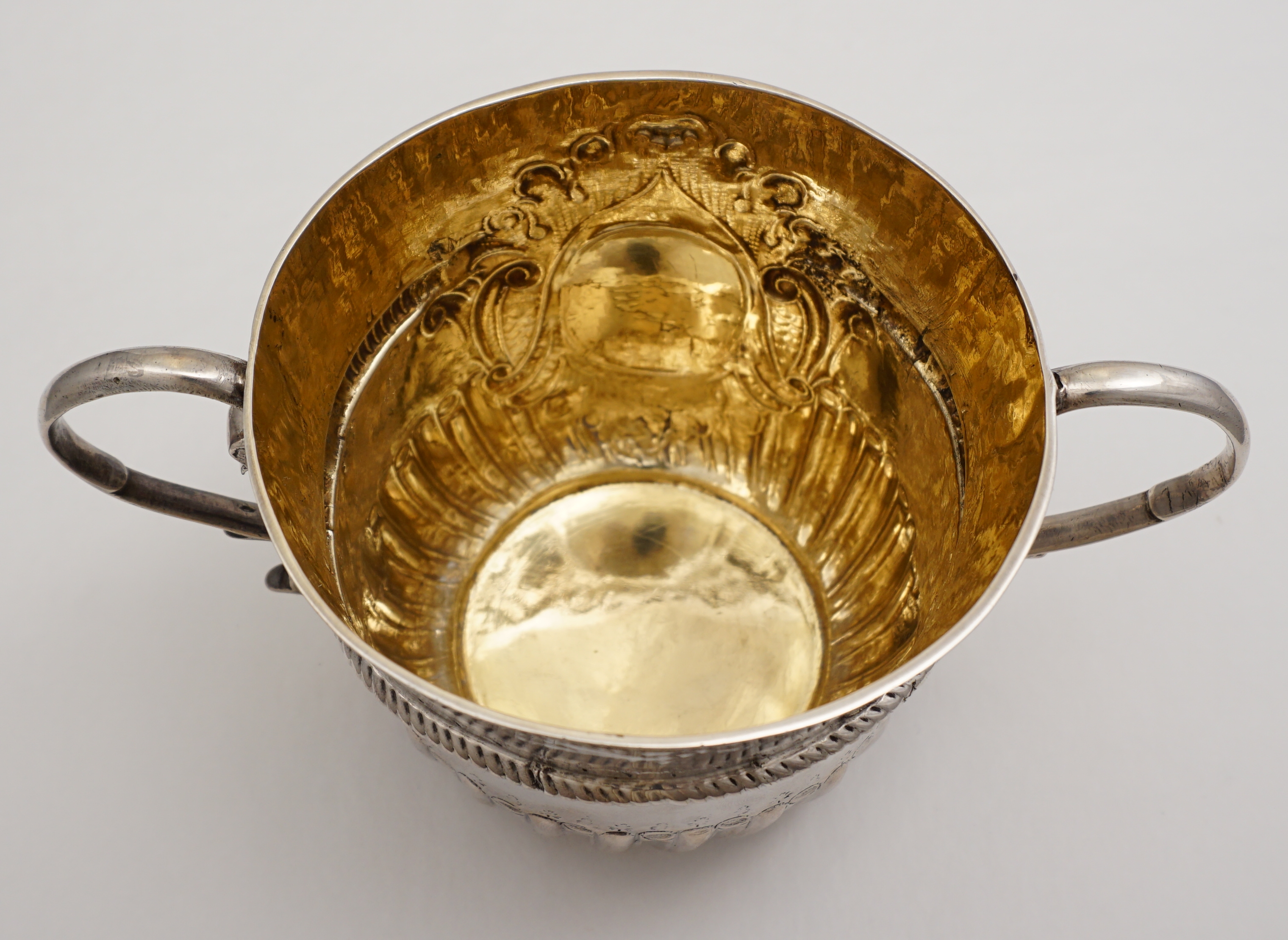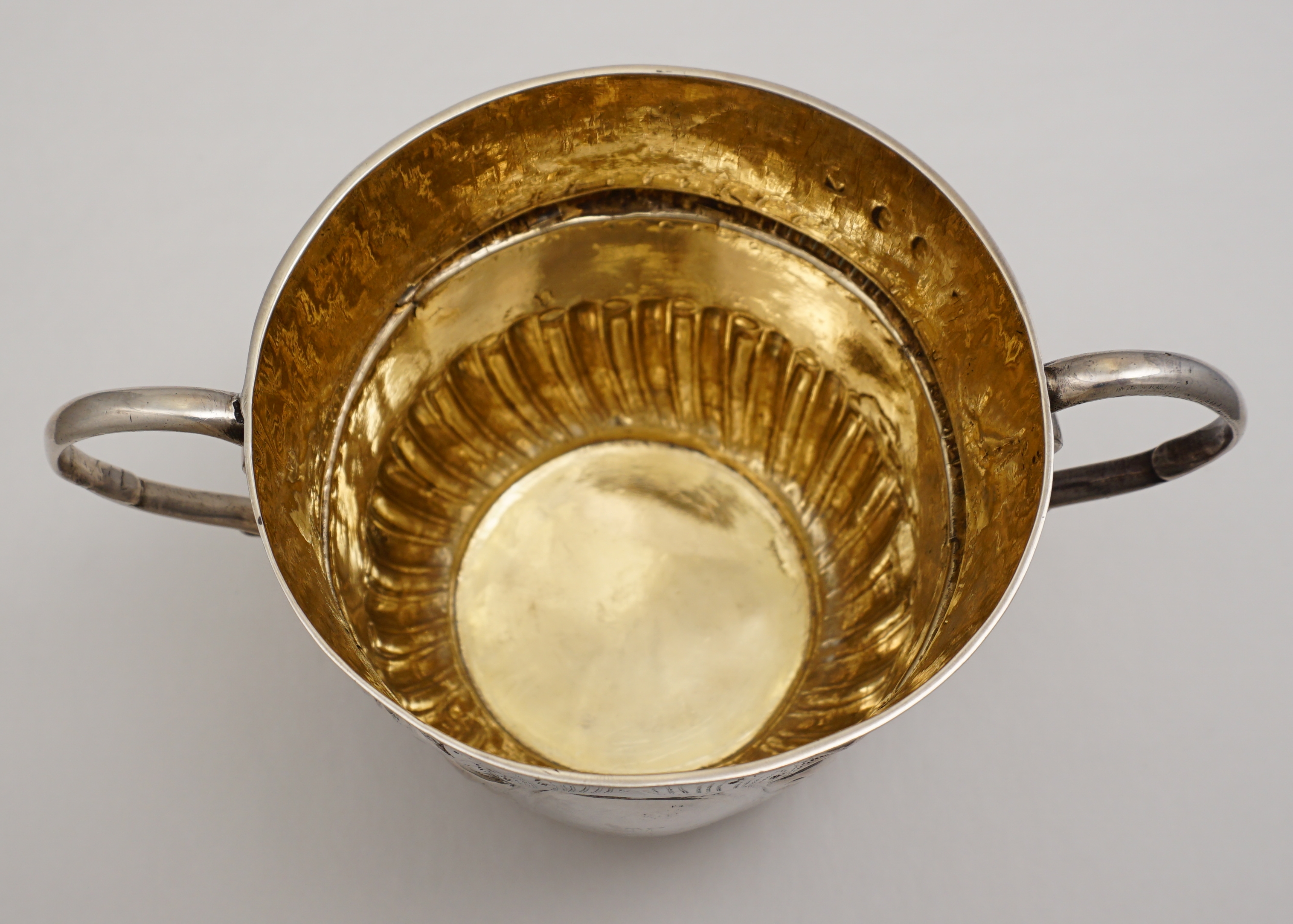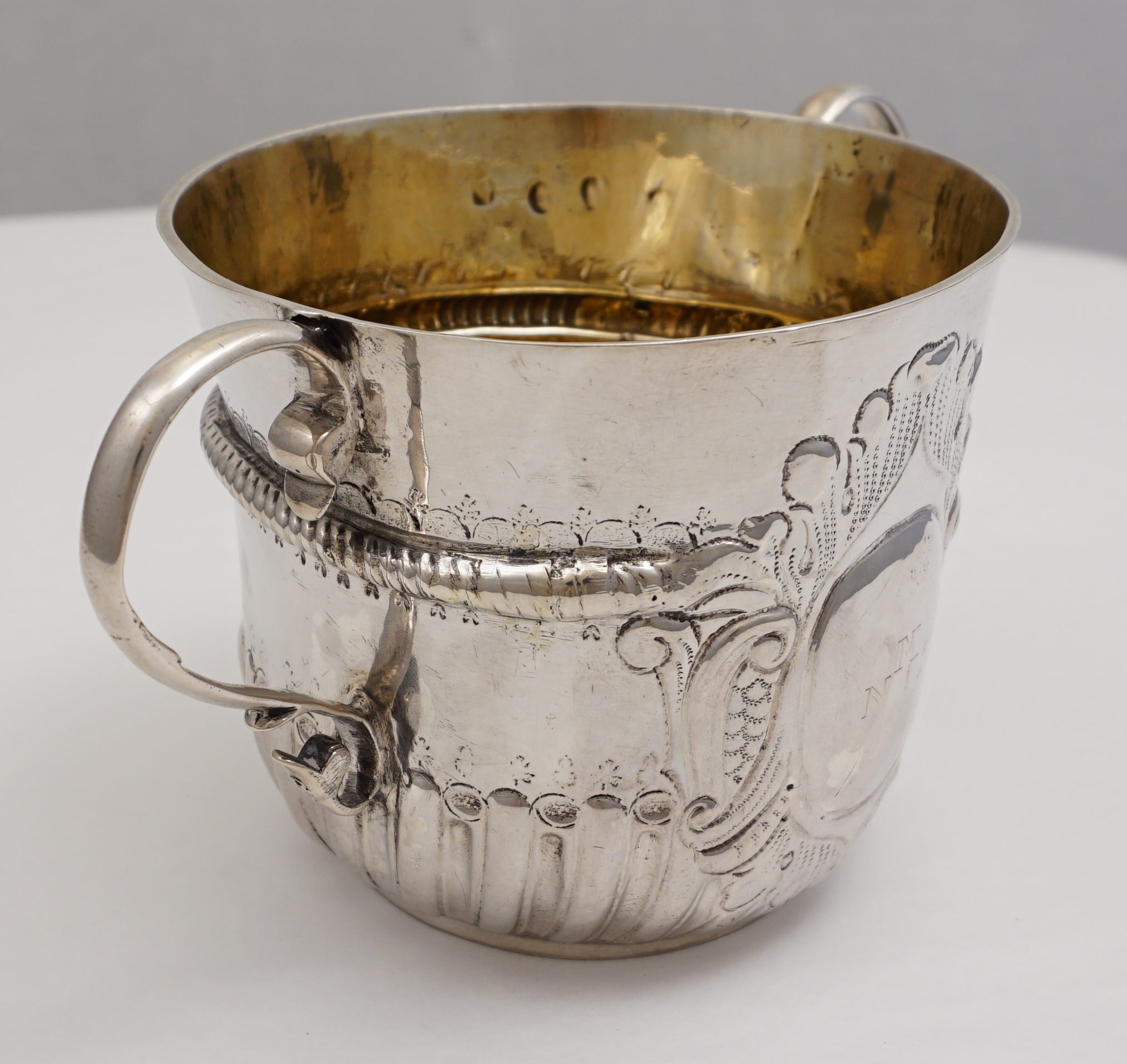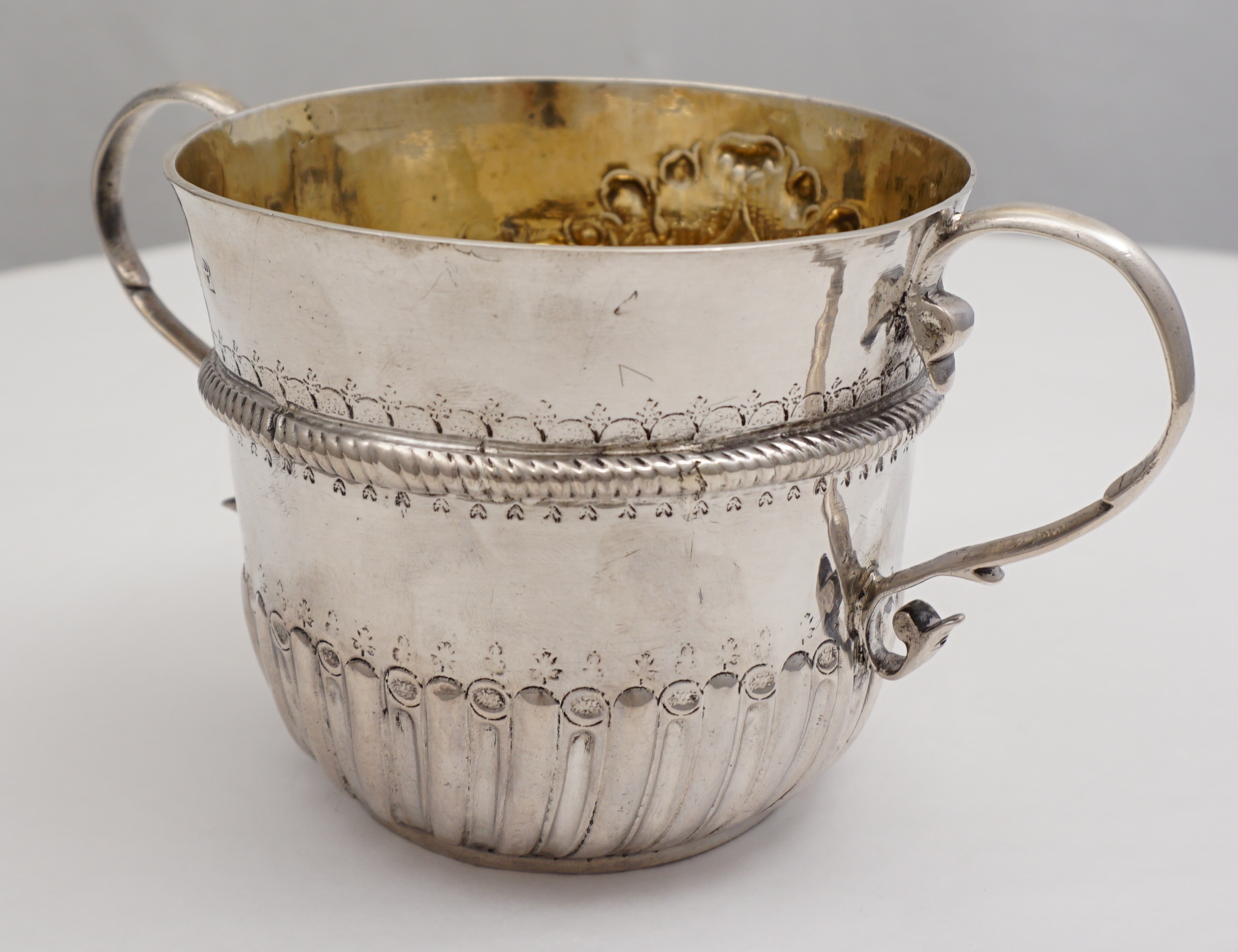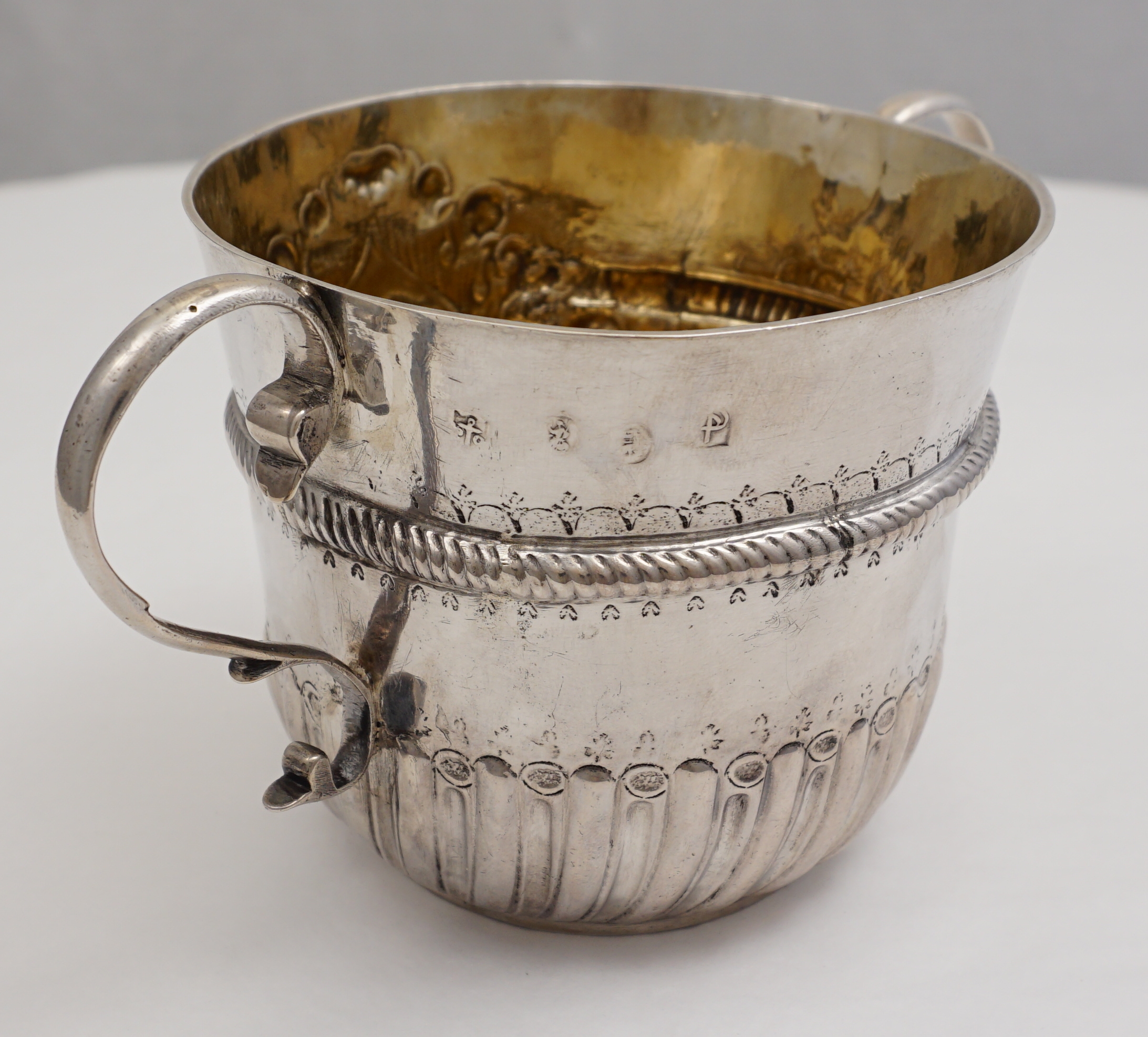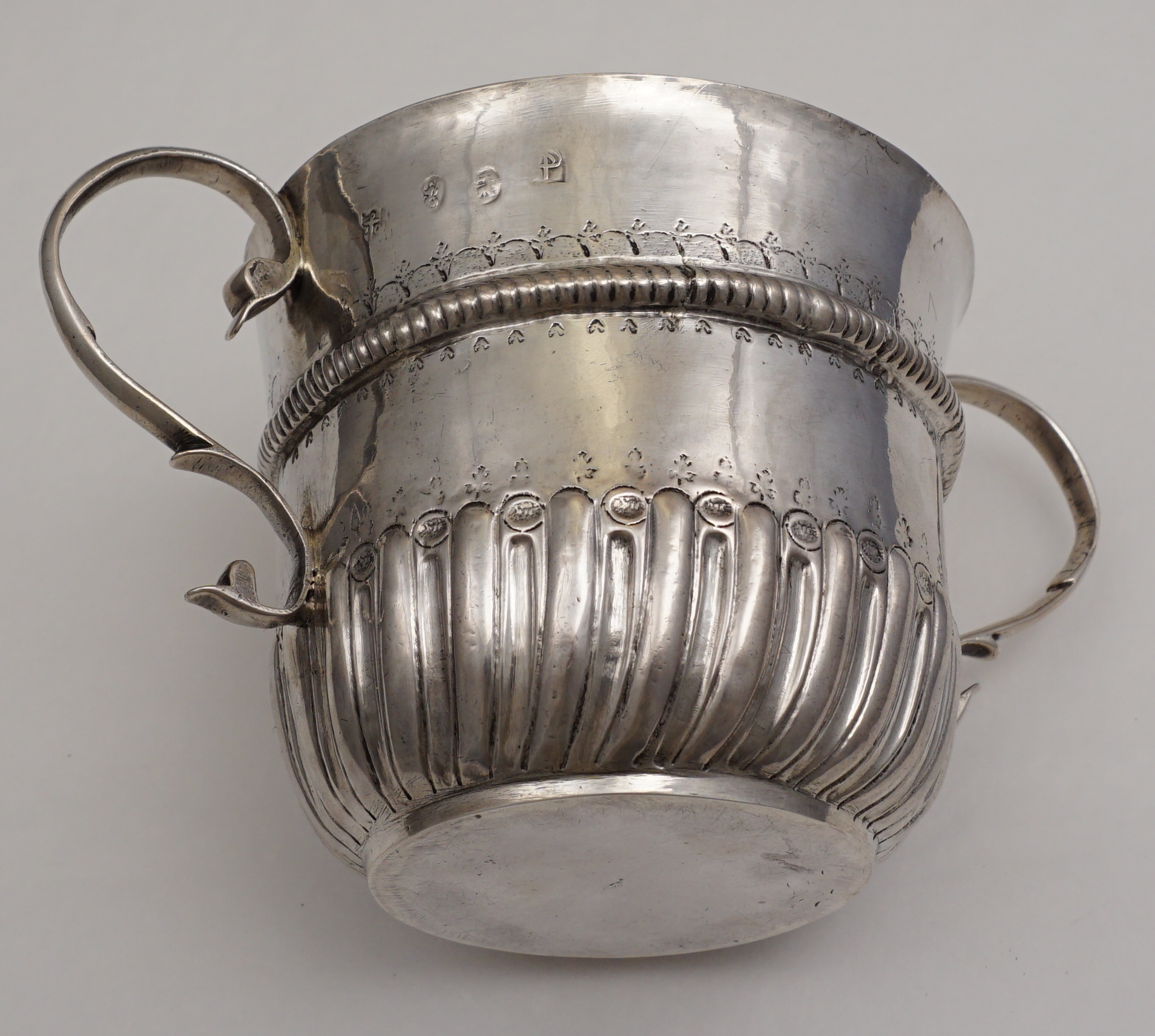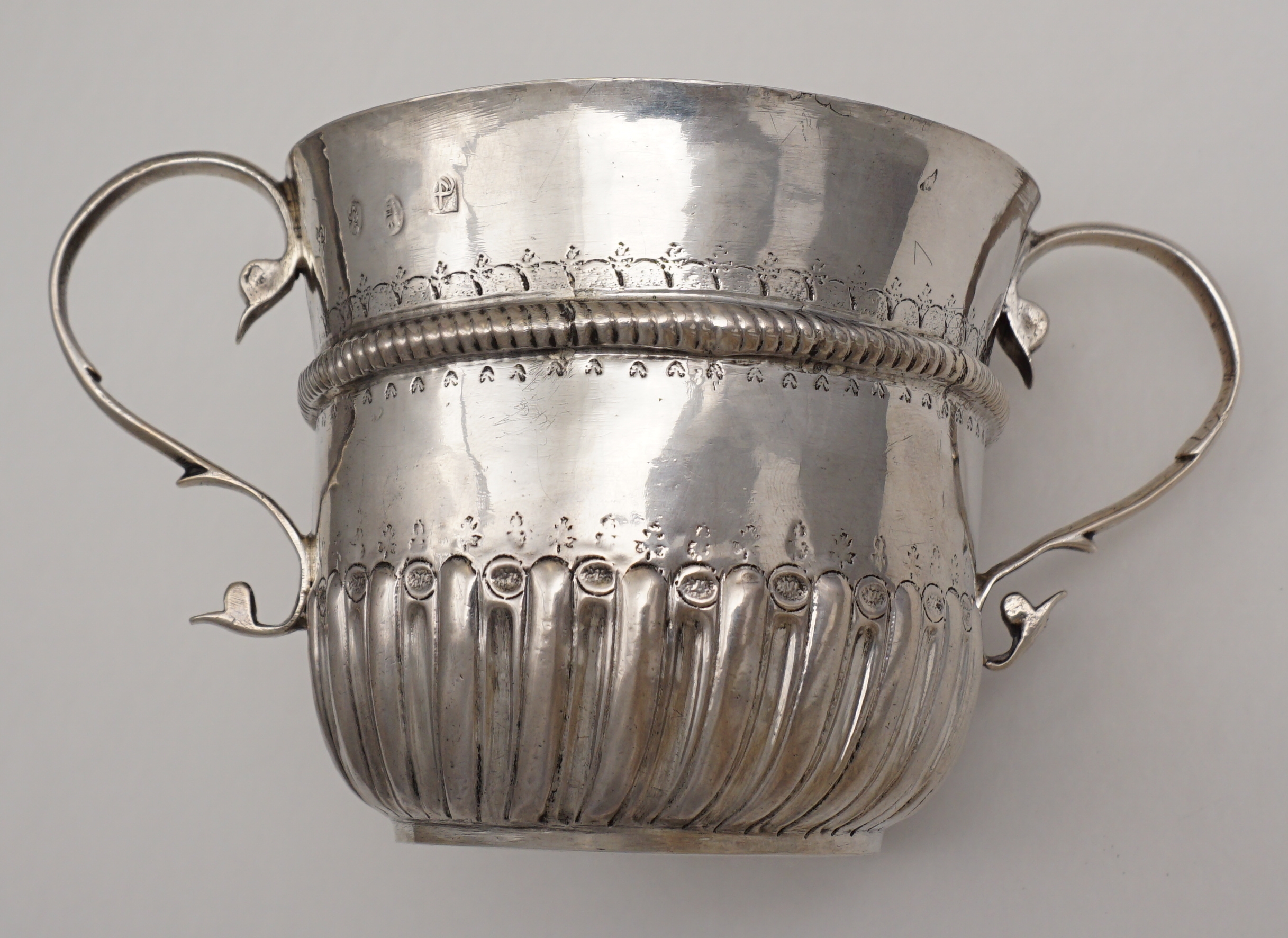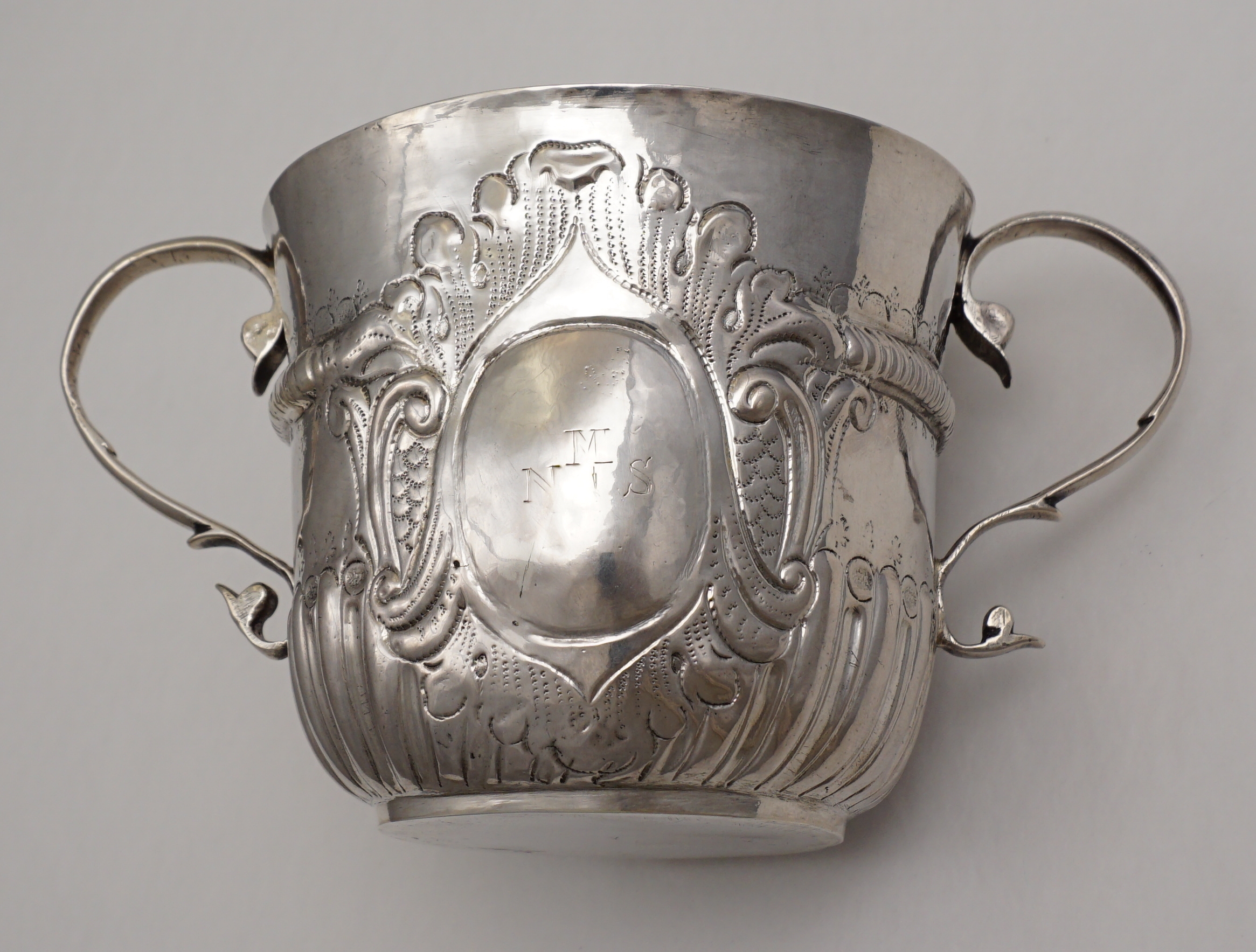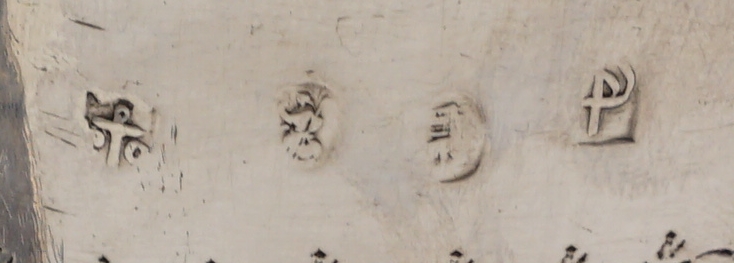| INDEX | ALL SILVER |
| DESCRIPTION | Antique English very early George I solid Britannia standard silver two-handled cup with a gilded interior. These items are also known today as
caudle cups, posset pots and porringers. Which term you use will likely depend upon where you live and each is equally incorrect (historically) although for different reasons. The
Victorian and Albert museum simply call their similar example of 1705 by John Sutton, 'cup' and I think this approach has merit. The earliest extant examples are from the 1650s but
16th century inventories exist in which examples are described as 'cups with ears' and in 1595 in the plate book of Brasenose College, Oxford 'towe silver potts wt eares'.
This pleases me. This quite large example is of standard form with a rope twist girdle above a lower band of fluting. Just above the fluting is engraved a band of alternating oak leaves and acorns. The cartouche is framed with chased scrolls and scale work and is engraved with an original betrothal engraving where "M" is the surname initial of the happy couple and "N" and "S" their first names. The gilding appears old and strong but is over the repairs so must be later. The hallmarks are exceptionally good and clear for silver of this period. |
| SILVERSMITH | Thomas Port, mark also noted on a "porringer" of 1715. Mark is PO, the first two letters of the surname which is the correct form on Britannia standard silver as written in Statute 8, William III, c.8 of 1696 and was enforced from 27th March 1697 until the restoration of sterling standard 1st June 1720. I like the inclusion of the anchor. Humour or an important aid for those who could not read? |
| DATE or HALLMARK | 1714, mark struck upside down |
| ASSAY OFFICE | London |
| WEIGHT in GRAMS | 199 |
| WIDTH inc. handles | 7", 176mm; Height of body 3 ¾", 93mm |
| SILVER STANDARD | ·9584 Britannia |
| CONDITION | Silver is still surprisingly thick and strong, hallmarks wonderful, many repairs. Clearly a piece that was used and maintained. Plenty of repair spots to the girdle where the silver would be at it's thinnest from the formation of the rope twist decoration. The old, rather abrasive polishes quickly rubbed through any thin high points and these have been stopped with wonderfully crude solder work still clearly visible to the inside. Some of these repairs are very early and crude, others better and so probably later in the 18th century when techniques and materials had improved. The repair to a split around the top handle joint to the left of the hallmarks is rather well done and is likely to be late 19th century and the last done before the gilding. After 150 years or so of domestic duty this piece began a new life as a treasured antique, to be enjoyed just as it is and no longer subject to daily use. I have wiped off the dirt to enable me to assess the condition but I have not polished. It would polish up a lot but I leave that choice to you. I would leave alone and enjoy exactly as it is, perhaps on a shelf or inside a cabinet with some lighting to bounce of the beautiful gilding. Cartouche forwards or hallmarks? For me it would be hallmarks. |
select any image to enlarge
| SOLD |
| Price £648 |
| item number m8399 |
| Available Silver Two-handled Cups |
| email questions to silfren@btinternet.com telephone 07563 011924 experts available 24 hours every day |
